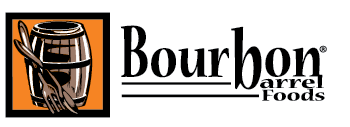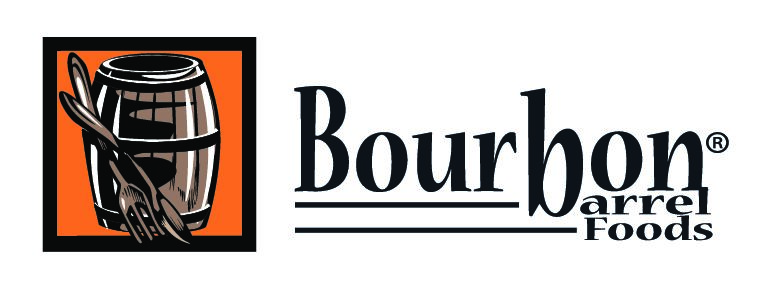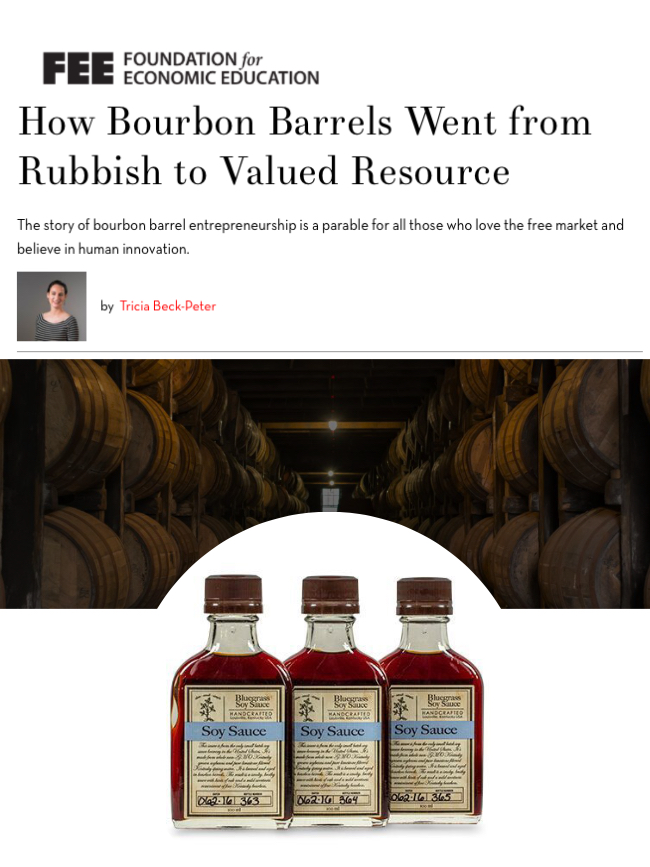We love seeing articles inspired by Matt Jamie’s innovations in the bourbon barrel industry. He really did have a one of a kind idea that sent shockwaves through the gourmet food industry, bourbon country, and chef scene. There is so much rich history behind the bourbon making heritage. Kentucky is well known as the bourbon capital and it’s really interesting how this article puts into perspective just how much bourbon is being produced in our state. The article states that there are more bourbon barrels aging bourbon than there are people in the state of Kentucky. Now that is impressive!
Thank you to the creator of this article Tricia Beck of FEE Syndication for such an extraordinary read. We really appreciate the pingback of our original blog and letting us know that you were inspired by our story! Many thanks to our inspiration for the content, The Southern Fork.
Credit and Repost of Blog Pose on FEE.ORG
Pretentious mixologists at overpriced bars the world over will tell you that every glass of booze has a story to tell – usually to justify charging $12 for a gin and tonic. But in one case, they are correct, and the story is particularly inspiring. This is the case of bourbon. There are incredibly specific constraints to what qualifies as bourbon.
From what we know, the evolution of bourbon took place primarily between the 1820’s and the 1870’s. Small distillers, many of Scottish heritage, experimented with replicating whiskey with corn as the base of the mash, instead of more traditional grains like barley and wheat. These early experiments led to improvements in taste and quality, though few of them would be recognized as bourbon today. This may not be because they are inherently different spirits, but because today there are incredibly specific constraints to what qualifies as bourbon.
According to the Federal Standards of Identity for Distilled Spirits, bourbon made for US consumption must fit narrow criteria. It must be made in the United States, the mash must consist of at least 51% corn, it must be distilled to at least 160 proof, and it must be aged in an unused, charred white oak barrel.
It is this last requirement that is the crux of our tale of heroism.
From Trash to Treasure
Forcing distillers to use one barrel per batch destroys the value of the resource.
For over 100 years, bourbon barrels were used for multiple batches. One barrel can age at least three batches of bourbon before the structural integrity of the barrel is compromised. Reusing barrels kept costs down and prevents the waste of wood, metal, and other resources. Barely-used barrels, rendered unsuitable for production, become waste where they had once been valuable.
Forcing distillers to use one barrel per batch destroys the value of the resource. Distillers were left with few options for what to do with all of those barrels. While some larger distilleries had the option of cycling into production for the European market, which does not require barrels to be unused, small distillers simply did not have that option.
Then entrepreneurs like Matt Jamie stepped in. Jamie, an entrepreneur with a chef’s background, was inspired to find inventive uses for bourbon barrels that were going to waste, and thus no longer creating value in his home-state of Kentucky.
Currently, there are more barrels of bourbon aging in Kentucky than there are people in the state. That level of production created a lot of waste. When Jamie founded Bourbon Barrel Foods in 2006, barrels were basically free. This created a unique opportunity for low-cost experimentation, which Jamie and other bourbon-barrel entrepreneurs seized.
Bourbon flavoring is almost as ubiquitous in the South as pumpkin spice is in the fall. Today, Jamie’s company Bourbon Barrel Foods creates 34 products, most notably their Bluegrass Soy Sauce. Bluegrass is the only American-made micro-brewed soy sauce, and it’s fermented in used Woodford Reserve bourbon barrels. While this seems like an odd pairing, Bluegrass has elevated soy sauce to great heights when compared with the watered-down Kikkoman that arrives in plastic pouches from your local takeout restaurant. Chefs describe Bluegrass Soy Sauce as deeply umami and capable of enhancing food in a way that commercial soy sauces just can’t. The culinary South has truly embraced Bluegrass, and it is used by celebrity chefs in kitchens across the country.
Bourbon-Flavored Everything
Matt Jamie is not the only entrepreneur in this game. In fact, bourbon flavoring is almost as ubiquitous in the South as pumpkin spice is in the fall. Because bourbon barrels absorb about 25 pounds of bourbon in their first batch, they can impart their deep, smoky sweetness to all sorts of products. This includes spices, salts, sugars, liquor, coffee beans, and sauces.
Bourbon flavors have become especially present in desserts, including bourbon-aged caramels and bourbon vanilla. My favorite distillery, St. Augustine Distillery Co., recently partnered with a local coffee bean roaster to create barrel-aged coffee beans.
Now, bourbon barrels are creating value for millions of consumers.
Now, bourbon barrels, which the government effectually reduced to waste, are creating value for millions of consumers by enhancing the products they already love. Simultaneously, new demand for bourbon creator’s secondary product has lowered the price of bourbon from previously inflated levels experienced when barrels were relegated as waste. Leave it to the market to create value from waste.
The story of bourbon barrel entrepreneurship is a parable for all those who love the free market and believe in human innovation. It shows how government intervention can burden an industry, but it also shows that there will always be people who can create value from waste. It shows that entrepreneurs look at limits and smirk, then quietly find a way around them.
This article was originally published on FEE.org. Read the original article.


